Mythology is an essential part of human life. We may not
spend much time discussing winged-footed Greek gods
or tales of dragonslayers while we tune our guitars and
haul amps into clubs. But myths and legends are still all around
us. From the triumph of the Jedi in the Star Wars films to the
latest heroic act on the sports field, myths inform our culture
and sense of belonging. And even within a musical context,
certain stories take root, grow, expand, mutate, and are shared
for generations until they reach legendary proportions.
The story of Slash’s instrument arsenal during
the heady days of recording Guns N’
Roses Appetite for Destruction is just such
a tale, retold by our era’s version of epic
poets and debated as hotly as any controversial
archaelogical discovery.
In March 2010, Gibson Guitars released
their Slash Appetite Les Paul model. The
company’s press materials proclaimed this
was “the axe that launched a thousand
riffs.” In videos hosted on the Gibson website,
Slash holds the new model next to
his personal guitar and says, “This is the
original right here,” and “It’s basically set
up just like my original was.” The camera
slowly pans over the instrument and zooms
in on some of the details.
“All things considered, with the original
one, it just happened to have a certain sort
of unique tone unto itself,” Slash says in
the video. “With the new one, we basically
tried to capture that. The new Appetite for
Destruction guitar is about as close as anybody
could get to the original.”
Tuesday, 29 January 2013
Thursday, 17 January 2013
Life is more Roses than Guns for Slash!
An interview with Slash about his tour and why he loves England.
Slash – rock guitar God and former drug fiend – wants to confess. Not about the time he overdosed, was pronounced dead, revived, then checked himself out of hospital and leapt straight on stage. Nor about his thermo-nuclear falling out with the lead singer of Guns N' Roses at the height of their fame. No, he wants to come out about his love for Adele.
"She's great," the 47-year-old says, speaking from Indiana ahead of a
UK tour starting next week. "She's a shot in the arm for this industry.
She writes her own music that's not at all contrived. And she's managed
to sell loads of records which makes her a great example to the younger
artists. Like Amy Winehouse, she's organic and real. It's great to have
that happen at this moment when everybody else is so synthetic."
It's an odd admission coming from a rock legend whose appetite for self-destruction was so huge that he had a defibrillator implanted at the age of 35. But Slash, recently named by Time magazine as the greatest guitarist of all time, after Jimmy Hendrix, appears to have mellowed.
It's apparent in the life he leads. In the early Nineties Saul Hudson, as he is also known, rewrote the book on guitar heroes: cigarette dangling, frequently shirtless, with a leather top hat clinging at a crazed angle to his shock of curls. The hat and the curls covered the top of his face to the extent that it was rumoured that he did not have eyes. Even off stage he invariably wore sunglasses to hide the ravages of what he dismissively referred to as "our little drink and drug dependencies".
Predictably, to go with the drugs and rock and roll there was lashings of sex with groupies. Oh, and gunplay: on one occasion he fired a shotgun through the ceiling of his home. His lover at the time was asleep in an adjoining room.
That was then. Now, having recently quit smoking; reconciled with his wife after filing for divorce in 2010, and drug-free for more than seven years, Slash has put his demons to rest. When not on tour you'll find him at home in Beverly Hills, nursing a cranberry cocktail; building Lego with his sons or challenging his neighbour Robbie Williams to a game of poker.
Born in Hampstead and raised in Stoke-on-Trent until he was six, Slash went from LA local hero to worldwide rock star with Guns N' Roses. Fusing heavy metal with a punk spirit, the band's debut album Appetite for Destruction in 1987 went platinum. As they went on to sell more than 100 million albums, egos and psyches paid the price: while lead singer Axl Rose developed a Messiah-complex, Slash succumbed to heroin.
The band's breakdown was as spectacular as its breakthrough. Lead singer and lead guitarist have not spoken to each other for nearly 20 years. Communication, if at all, is via mutual acquaintances and at the level of name-calling: Rose has called Slash "a cancer". The guitarist, in response, doesn't "bother myself" about his former bandmate. "The differences of opinion between us became too hard to maintain," he recalls, saying Guns N' Roses was built on a "pure and naïve rock and roll fantasy" which came to a shuddering halt. Clearly, the well of bad blood remains full: Rose is mounting a $20m lawsuit against a games developer for including the guitarist in a Guns N' Roses video game, and in April the singer was the only member absent when the band reunited for their induction into the Rock and Roll Hall of Fame.
Slash insists he has moved on: "I still look back on it being the ultimate pre-adult, post-adolescent experience. But I simply don't think you and I would be speaking had I tried to carry on. I'm a pretty durable survivor and I'm fortunate to be here anyway. But I think if I'd kept trying to negotiate that existence, I wouldn't be here."
He describes his life now as "less domestic bliss" and "more domestic rock and roll". His children, London, nine, and Cash, seven, give shape to his life. "I want to make sure that I instil in my children some of the values that kept me grounded growing up. In the midst of all the drugs and the booze and the chicks," he says, "no matter how crazy I have been, there was always a decorum and set of manners. A lot of that came from my parents and wider family."
Musically, he has little left to prove. Four years after leaving Guns N' Roses, he formed hard-rock supergroup Velvet Revolver and since 2010 has a band with Myles Kennedy on vocals. Kennedy is everything Rose wasn't: mild-mannered, flexible; even acquiescent when it comes to singing the Guns N' Roses back catalogue. They are crafting a second album to be released next year.
Slash's return to the UK next week marks a new chapter and, while it's clear that his identity was formed by growing up in LA from the age of six, it gives him a chance to nod towards his British roots. As well as Adele, he insists that much of the best music lately has come from British women. "Amy Winehouse was great. God bless her. She was one of the purest artists to come out for a long time. Most of those who have come out are female; it's not the male-dominated rock and roll icons of my generation. It's refreshing."
He has memories of growing up in Stoke, where he revisited last year for the first time, though when pushed, he struggles to cite specifics. Nevertheless, he is pleased to be welcome. "The UK has always been very gracious. There is a patriotism that is in the British blood. It's endearing for me to be part of that. When I'm in Britain I feel as though part of me has come back to who I am."
It's an odd admission coming from a rock legend whose appetite for self-destruction was so huge that he had a defibrillator implanted at the age of 35. But Slash, recently named by Time magazine as the greatest guitarist of all time, after Jimmy Hendrix, appears to have mellowed.
It's apparent in the life he leads. In the early Nineties Saul Hudson, as he is also known, rewrote the book on guitar heroes: cigarette dangling, frequently shirtless, with a leather top hat clinging at a crazed angle to his shock of curls. The hat and the curls covered the top of his face to the extent that it was rumoured that he did not have eyes. Even off stage he invariably wore sunglasses to hide the ravages of what he dismissively referred to as "our little drink and drug dependencies".
Predictably, to go with the drugs and rock and roll there was lashings of sex with groupies. Oh, and gunplay: on one occasion he fired a shotgun through the ceiling of his home. His lover at the time was asleep in an adjoining room.
That was then. Now, having recently quit smoking; reconciled with his wife after filing for divorce in 2010, and drug-free for more than seven years, Slash has put his demons to rest. When not on tour you'll find him at home in Beverly Hills, nursing a cranberry cocktail; building Lego with his sons or challenging his neighbour Robbie Williams to a game of poker.
Born in Hampstead and raised in Stoke-on-Trent until he was six, Slash went from LA local hero to worldwide rock star with Guns N' Roses. Fusing heavy metal with a punk spirit, the band's debut album Appetite for Destruction in 1987 went platinum. As they went on to sell more than 100 million albums, egos and psyches paid the price: while lead singer Axl Rose developed a Messiah-complex, Slash succumbed to heroin.
The band's breakdown was as spectacular as its breakthrough. Lead singer and lead guitarist have not spoken to each other for nearly 20 years. Communication, if at all, is via mutual acquaintances and at the level of name-calling: Rose has called Slash "a cancer". The guitarist, in response, doesn't "bother myself" about his former bandmate. "The differences of opinion between us became too hard to maintain," he recalls, saying Guns N' Roses was built on a "pure and naïve rock and roll fantasy" which came to a shuddering halt. Clearly, the well of bad blood remains full: Rose is mounting a $20m lawsuit against a games developer for including the guitarist in a Guns N' Roses video game, and in April the singer was the only member absent when the band reunited for their induction into the Rock and Roll Hall of Fame.
Slash insists he has moved on: "I still look back on it being the ultimate pre-adult, post-adolescent experience. But I simply don't think you and I would be speaking had I tried to carry on. I'm a pretty durable survivor and I'm fortunate to be here anyway. But I think if I'd kept trying to negotiate that existence, I wouldn't be here."
He describes his life now as "less domestic bliss" and "more domestic rock and roll". His children, London, nine, and Cash, seven, give shape to his life. "I want to make sure that I instil in my children some of the values that kept me grounded growing up. In the midst of all the drugs and the booze and the chicks," he says, "no matter how crazy I have been, there was always a decorum and set of manners. A lot of that came from my parents and wider family."
Musically, he has little left to prove. Four years after leaving Guns N' Roses, he formed hard-rock supergroup Velvet Revolver and since 2010 has a band with Myles Kennedy on vocals. Kennedy is everything Rose wasn't: mild-mannered, flexible; even acquiescent when it comes to singing the Guns N' Roses back catalogue. They are crafting a second album to be released next year.
Slash's return to the UK next week marks a new chapter and, while it's clear that his identity was formed by growing up in LA from the age of six, it gives him a chance to nod towards his British roots. As well as Adele, he insists that much of the best music lately has come from British women. "Amy Winehouse was great. God bless her. She was one of the purest artists to come out for a long time. Most of those who have come out are female; it's not the male-dominated rock and roll icons of my generation. It's refreshing."
He has memories of growing up in Stoke, where he revisited last year for the first time, though when pushed, he struggles to cite specifics. Nevertheless, he is pleased to be welcome. "The UK has always been very gracious. There is a patriotism that is in the British blood. It's endearing for me to be part of that. When I'm in Britain I feel as though part of me has come back to who I am."
Tuesday, 8 January 2013
In Search of Slash's sound.
In Search of the Secrets of Slash’s Sound

“A Les Paul into a Marshall”. It’s an accurate description of Slash’s signature sound, and it seems so simple. So why is it so hard to get that famous tone? In search of the answers to this and other questions about Slash’s rig, I interviewed Ace Bergman, Slash’s guitar tech on the Apocalyptic Love tour.
Ace started playing guitar when he was 13. His father was a carpenter and so he was always around tools. When Ace left the Marines, he knew he wanted a career in the music industry. He also knew that it was going to be difficult to pay the bills with his particular type of guitar playing—extreme metal—and so he decided to combine the twin passions of guitars and tools, and become a tech.
He attended a luthiery school, where he was taught instrument building and repair. When it got to the point that he was repairing the same guitars over and over again—guitars that weren’t really broken in the first place—he started bringing in broken guitars from guitar shops, to repair at the school. Needless to say, he finished the course with flying colors. Eventually this led to paid repair work, then to one-offs at local gigs, and finally to touring. Ace’s first tour was with Black Rebel Motorcycle Club in 2004, and he carved out a varied career from there.
In 2011, one of Ace’s roommates was working with Cypress Hill. They were playing an anniversary show at the Troubador, and Ace ended up working as backline tech. At that gig, Slash played guitar on Rock Superstar (a performance you can check out on YouTube), and he and Ace hit it off.
This led to a series of one-off gigs with Slash, and then the 2012-13 tour. A few hectic months later, Ace and I are sitting in the tour bus drinking coffee and talking about Slash’s rig.
RI: So, let’s get straight on to that rig. Is it really as simple as it seems?
Ace: Yeah, it’s all him. All he has in front of him is the wah. I have his pedalboard in front of me, which I operate for him, but most of the time he uses very little FX. I boost his solos; there’s a little bit of delay in two or three songs; the beginning of Paradise City has a chorus. We also have a phaser, a tremolo, an octave fuzz and a talkbox that we use in a few places. Everything else you hear is just him using palm mutes, switching pickups, rolling up and down volume and tone knobs… his playing is very expressive and dynamic. He has a lot of little nuances and tricks in his playing.
RI: He does seem to use the knobs on his guitar more than a lot of players.
Ace: He started doing a lot of that on this tour. He decided that instead of running a clean head and a dirty head, he would run two heads simultaneously and do the clean and dirty himself. Apparently when he was running clean and dirty heads on the last tour he wasn’t getting the separation he was looking for. The clean head still sounded more dirty than clean.
I did a few changes to the guitars, changed out some of the potentiometers to get the swell that he was looking for, so that he can clean the sound up better. You can see him looking at the numbers at the start of the song. He has to make the pickup switches during the song, so he’ll set his levels up and then go through and play it.
RI: I put a pair of the Slash pickups in my Les Paul recently. There’s a lot of treble there.
Ace: A lot of our treble is reined in by just how much cable we use. He has a long stage lead going into the wah, which is not very well buffered, and then that goes into a really long lead that goes back to me. It has to be long because when we do stadiums I’ll be quite a long way from his wah pedal. I’ve put buffers in there before, and it adds more treble, and Slash looks at me like “what did you do?”. It’s not, “Wow, now I have more high end”, it’s, “This isn’t what we dialled in.” We also roll back the treble and presence on the amps. They’re both back past noon. Slash has very acute hearing. One of the reasons he’s so good is that he knows exactly what he wants to hear, and he chases that sound until he gets it.
RI: Is there anything special about the pots you put in the guitars?
Ace: They’re all 500K pots, audio taper. We tried a bunch until we got what we were looking for. With the volume at 1, 2, 3, you get a clean sound. It’s not like you have nothing at 1 to 3 and then when you turn past that it sounds like you hit your standby switch.
RI: How about tone caps?
Ace: I never changed them – they’re whatever came in the guitar. Different guitars have different values, but it’s 0.022μF in most of them. Those have lasted the whole time.
RI: The Slash Goldtops from Gibson have a treble bleed circuit. Do you ever put that into anything else?
Ace: No, they’re left stock. There’s only one Goldtop in the working stock, and that’s Slash’s hotel guitar. I change the strings once every few weeks and he plays it in his hotel, writes music on it. But he doesn’t destroy that one like he does the stage guitars.
RI: Slash does have a reputation for being tough on guitars. But when you watch him play, he doesn’t seem to be mistreating them.
Ace: It’s mostly his sweat, honestly. And just the number of shows. His playing is very… physical. You can see buckle rash; where his bracelets hit the guitar it cracks the finish. He doesn’t mistreat them, he just plays hard. And touring is tough on guitars. All the climate changes affect guitars. Being handled by customs agents in South America affects guitars. Sometimes they’ll travel 9000 miles in a shipping container. It’s a hard life for them. It’s a hard life for us too! We try to eat well, and stay in nice places but just constantly moving is tough on us, on the guitars, and on the amps. I’ve spent one night in my bed in the last six months. It’s just a rough way of life.
RI: So do the guitars end up as landfill?
Ace: Nothing gets thrown away. The guitars just get taken out of rotation, but anything Slash likes, he keeps.
RI: Nice to know. If there was a piece of gear you could remove from the gig and not have to deal with, what would it be?
Ace: Well, the guitars are the most finicky. If we could get rid of them it’d be a lot easier on the guitars and amps! 80% of what I do is restringing them and setting them up. Seriously though? There’s nothing in the rig that I think is redundant or unnecessary. We have backups for everything. If we add something to the rig I have to have three. If one goes down I still have to have a backup.
RI: If for some reason you had no guitars and needed to do a show, would you buy one in a shop or get one shipped from LA?
Ace: We’d cancel the show. But to answer your question, I’d call Gibson. They will bend over backwards to make sure we can get done what we need to get done. If Slash does a one-off, we’ll just call Gibson and ask them to have a guitar there ready for us. Then when we get there I’ll just restring it and set it up. It’d be weird to go buy Slash a guitar. I might buy one for myself!
We have good relationships with all our manufacturers. It’s not just because of Slash’s fame, but because he’s a very nice person. He builds personal relationships with all our manufacturers. He goes in and gets involved with the developments of all his signature products.
RI: It really is nice to be able to wire those pickups in and immediately hear elements of that Slash sound from the guitar.
Ace: And those pickups you buy in the store are exactly the same as the ones I put in Slash’s guitars. They come in the same packaging, everything. The only mods I’ve had done are to get a few with four-conductor wiring. Slash’s BC Rich guitars are wired for it, and he said he wanted to keep all those options.
RI: Seymour Duncan are offering the pickups in four conductor wiring and custom colours now – sounds like there was probably no trouble getting that approved.
Ace: Yeah, we have an ongoing relationship with them. The original AFD guitar was used when Slash was recording Apocalyptic Love, and we were getting feedback from it. I drove the guitar up to Seymour and he took care of it personally. And then, during recording, Seymour and Evan Skopp dropped by the studio to make sure everything was OK. They really look after us.
You can see the work Seymour did on Slash’s guitar in this video:
Later, we take a walk on to the stage. There’s an area just off stage left where Ace works. Here we find a vault containing all the guitars (quite a sight in itself), the amps, the pedalboard, lights quietly blinking away. On stage there are two full stacks complete with heads. But why are they there – aren’t those the performance amps in the rack?
“Yeah, those are fake,” Ace explains. They’re simply there because “the audience expect to see them”. And is there anything actually in those fake heads? “Oh yeah – a battery and an LED!” So if you were straining your eyes to get a bead on the amp settings the last time you saw Slash live, you can probably throw those notes away.
Over in Ace’s work area, it’s all very utilitarian. There’s a set-list taped to the wall. Next to each song title is an indicator of how the guitars for that song are tuned. With Guns N Roses, Slash was pretty much always tuned to E♭. But on this set-list there are several in standard tuning, one in drop-D, and a few all the way down at drop-C♯.

Then there’s a songbook. In it, Ace has compiled cues for all the pedal operations for each song into an easy-to-follow formula. Some of the pedals are marked with bits of hanging tape so that Ace can feel his way between them in the dark.

While I’m photographing all this stuff, I ask Ace if he minds me taking photos of the dials on the fronts of the amps. His answer reminds me that perhaps those photos aren’t very important after all. “Not at all,” he says. “We’re not worried some guy’s gonna find out our amp settings and, you know, re-record the album or something.” He waves his hand across the rig. “This stuff isn’t secret. The secrets are all in that guy’s head.”
With thanks to Slashparadise for this one.
Sunday, 6 January 2013
A little bit about Slash without his guitar.
So you've read his bio and the press release. You think you know about Slash? Well here is a little piece about the other side of Slash's life. Everyone has family and the guitoar hero that is Slash is no different. It seems he was destined for greatness at an early age. Read on to find out more.
Slash's family
"I
thank my parents for being who they are. They exposed me to
environments so rich and colorful and unique that what I experienced
made a permanent impression on me." (Slash)
His mother: Ola Hudson
"She
turned me on to all different forms of art and the importance of
artistic self expression and creative communication thru music and dance
from as early on as I can remember." (Slash)
Born in 1946, Ola Hudson was an African American costume designer whose
clients included Ringo Starr, John Lennon and David Bowie. She died of
lung cancer in 2009.
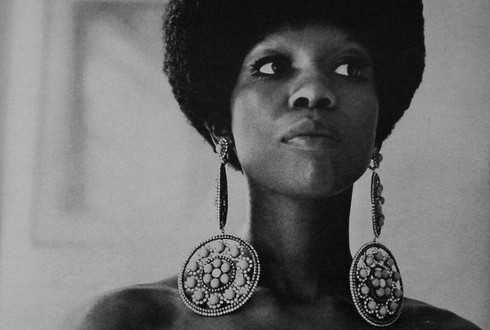
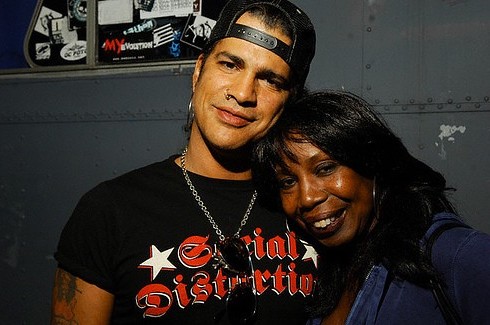
His father: Anthony Hudson
"My
first professional gig was at Al's Bar, playing in a band with friends
of my dad's. My dad was very proud of my love of guitar and always
bragged to his friends about me." (Slash)
Anthony Hudson is an English artist who created album covers for musicians such as Neil Young and Joni Mitchell.
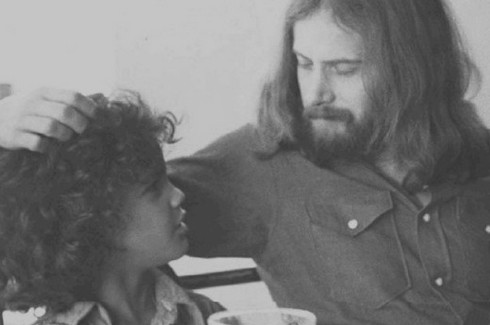
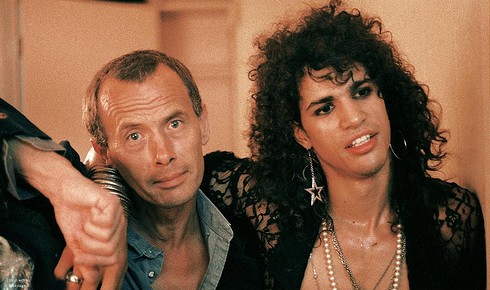
His brother: Albion Hudson
"The
birth of my brother changed the dynamic of the family a bit. Suddenly
there was a new personality among us. It was cool to have a little
brother and I was glad to be one of his caretakers." (Slash)
Born in 1972, Albion "Ash" Hudson is a designer who founded ConArt Inc.
which is a graff-inspired brand for clothing, surf and skate items,
printables that also credits graffiti art and artists. He has designed
several album covers for Slash.
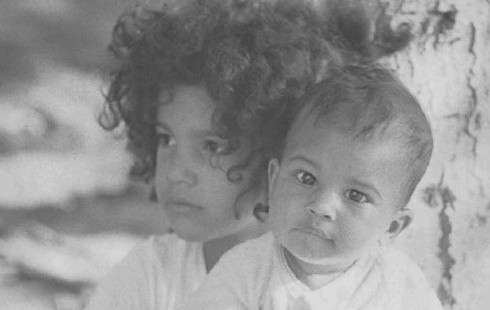
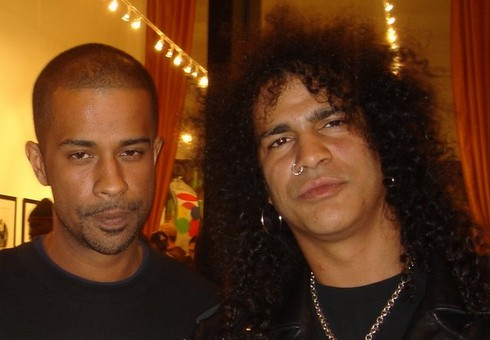
His wife: Perla Ferrar Hudson
"We're
completely polar opposites, him and I, and it's up to me to bring him
out of that on a regular basis and be part of the real world." (Perla
Hudson)
Perla Ferrar first met Slash in 1992, backstage at a Guns N' Roses
concert in Las Vegas. They married on October 15, 2001 in Hawaii.


His children: London and Cash Hudson
"I
want to make sure that I instil in my children some of the values that
kept me grounded growing up. In the midst of all the drugs and the
booze, there was always a decorum and set of manners." (Slash)
Slash and Perla have two children, London Emilio and Cash Anthony, born in 2002 and 2004 in Los Angeles.


His ex-wife: Renee Suran
"She was really good-looking and she knew it, and that whole vibe locked me like a tractor beam." (Slash)
On October 10, 1992, Slash married model-actress Renee Suran in
California. They divorced in late 1997 after five years of marriage.

His bodyguard: Junior
As he follows him everywhere, Junior is almost part of Slash's family.
Wednesday, 2 January 2013
Ever wondered what Slash does when he puts down the guitar?
Aside from being a complete legend on guitar. We showed you the video of Slash and Betty White for the L.A zoo as well, so here is a bit more info on what Slash likes to do when he turns off his amp.
Reptiles
"Basically
I am a self-taught zookeeper and I definitely relate to the animals
I've lived with better than to most of the humauns I've known." (Slash)
As a child, Slash was fascinated by dinosaurs and reptiles. He started
caring for and keeping snakes as pets when he moved from England to
California. Until 2008, he had about one hundred snakes, lizards and
crocodiles in his house. Since several years, Slash is also a staunch
supporter of the Los Angeles Zoo and an advocate for zoos all around the
world. In 2011, he received the Tom Mankiewicz Leadership Award for his
involvement in the causes of wildlife and environment protection.Famous pets: Mickey (black-and-white rat), Jack (Jackson's chameleon), Clyde and Sam (anacondas), Pandora (boa constrictor which appears in "Patience" music video), Jacob (another boa that Slash gave to the Los Angeles Zoo), Adrianna (Burmese python which appears in "Patience" music video) and Curtis (mountain lion).
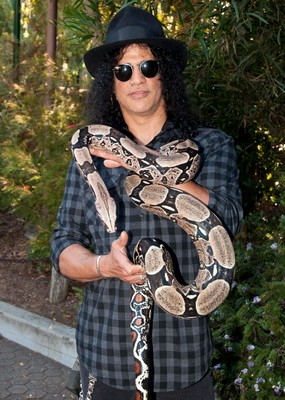
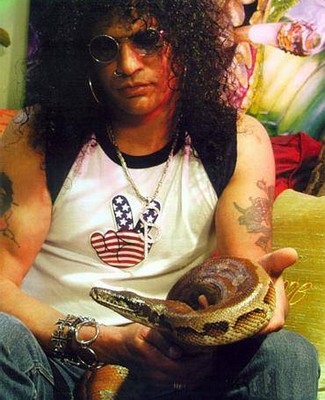
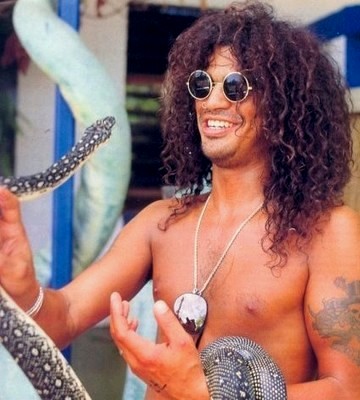
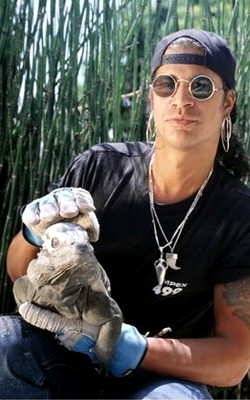
Pinball
"My
ex-wife, her family lives in the suburbs of Chicago, and I went there
to visit for the first time - I never played pinball as a kid - so I was
bored. there was nothing to do except drive into the city and get
fucked up and never be able to find my way back. But they had a basement
- those are real popular in Chicago - and they had pinball machines
down there. So I played pinball every night for a week." (Slash)
Slash discovered pinball machines in the early 1990s. He still quotes
Funhouse, Party Zone, The Addams Family and Jurassic Park as his
favourite ones. In 1994, Data East asked him to participate in the
conception of a Guns N' Roses machine: playing to bring band members on
stage. The soundtrack featured the song "Ain't Goin' Down", a Use Your
Illusion outtake that signs the only official release of the song. A few
years later, Slash contributed to the Viper Night Drivin' machine
produced by Sega. You can hear "Speed Parade" from Slash's Snakepit
during the game and Slash made a few cameos. He also recorded a song
dedicated to his love of pinball machines: "Be The Ball" features on the
1995 Slash's Snakepit album It's Five O'Clock Somewhere.
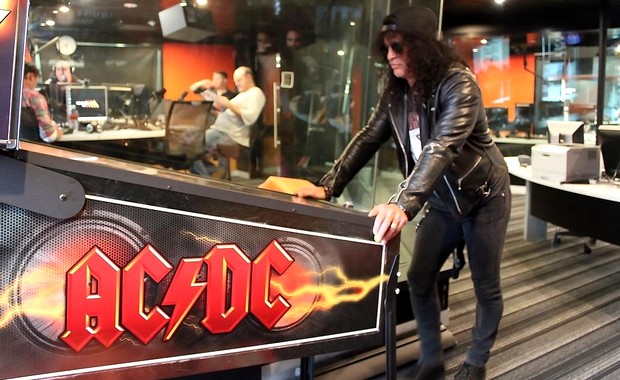
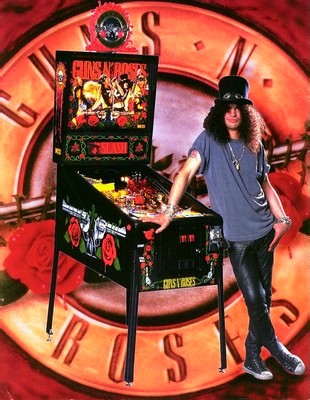
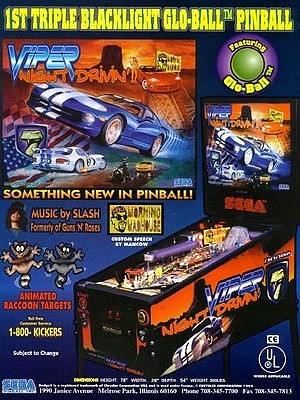
BMX
"By
1978 we were riding bicycle motocross. The tricks that he performed
were ahead of the time. Slash was a star. Calera flashes would go off
when he took his jumps. He approached bicycle motocross with the same
style and flash as he did everything else." (Marc Canter)
Before learning to play guitar, Slash had a passion for BMX and bicycle
races. He was listed in a couple of magazines as an up-and-coming rider
in the thirteen to fourteen age category.

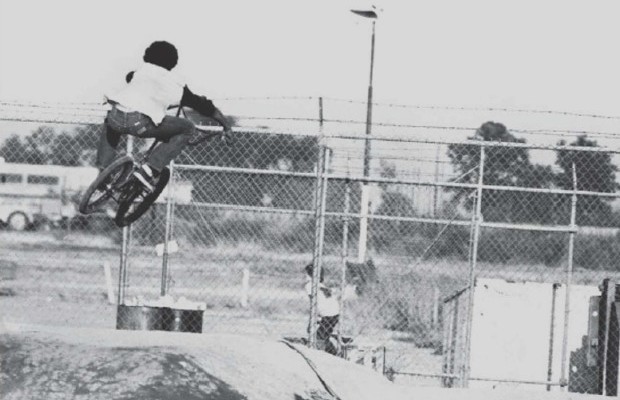
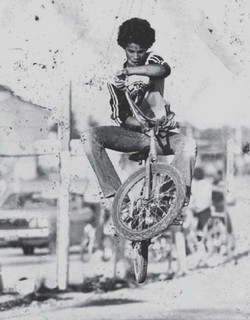
www.m4eventsdxb.com
www.slashdubai.com
www.facebook.com/m4eventsdxb
@m4eventsdxb
gplus.to/m4eventsdxb
Tuesday, 1 January 2013
Slash & Betty White Star In New Ad For The Los Angeles Zoo (Video)
We all knew that Slash love to play guitar. We all know that Slash loved a good party to but we bet you didn't know that he also is very fond of animals. He has numerous projects on the go for animal charities and recently starred in a video with Betty White for the L.A zoo. Check it out here!
 Slash and actress Betty White have teamed up to shoot a new ad for Los Angeles Zoo's new reptile house attraction.
Slash and actress Betty White have teamed up to shoot a new ad for Los Angeles Zoo's new reptile house attraction.
The odd couple is fronting a new campaign to get animal fans to check out The Lair, which opens in March.
The attraction will feature 60 species of "weird, rare and endangered amphibians, invertebrates and reptiles".
Both Slash and White have been longtime supporters of the Los Angeles Zoo. The place's new baby orangutan has been named Elka after White's character on hit sitcom Hot in Cleveland. She serves on the board of the Greater Los Angeles Zoo Association, while Slash was honored by zoo officials last year for his contributions to the wildlife center.
Follow this link to see the video in full:
http://www.youtube.com/watch?v=y7BK0NIZbhs
www.m4events.com
www.slashdubai.com
www.facebook.com/m4eventsdxb
@m4eventsdxb
gplus.to/m4eventsdxb

The odd couple is fronting a new campaign to get animal fans to check out The Lair, which opens in March.
The attraction will feature 60 species of "weird, rare and endangered amphibians, invertebrates and reptiles".
Both Slash and White have been longtime supporters of the Los Angeles Zoo. The place's new baby orangutan has been named Elka after White's character on hit sitcom Hot in Cleveland. She serves on the board of the Greater Los Angeles Zoo Association, while Slash was honored by zoo officials last year for his contributions to the wildlife center.
Follow this link to see the video in full:
http://www.youtube.com/watch?v=y7BK0NIZbhs
www.m4events.com
www.slashdubai.com
www.facebook.com/m4eventsdxb
@m4eventsdxb
gplus.to/m4eventsdxb
Subscribe to:
Comments (Atom)

